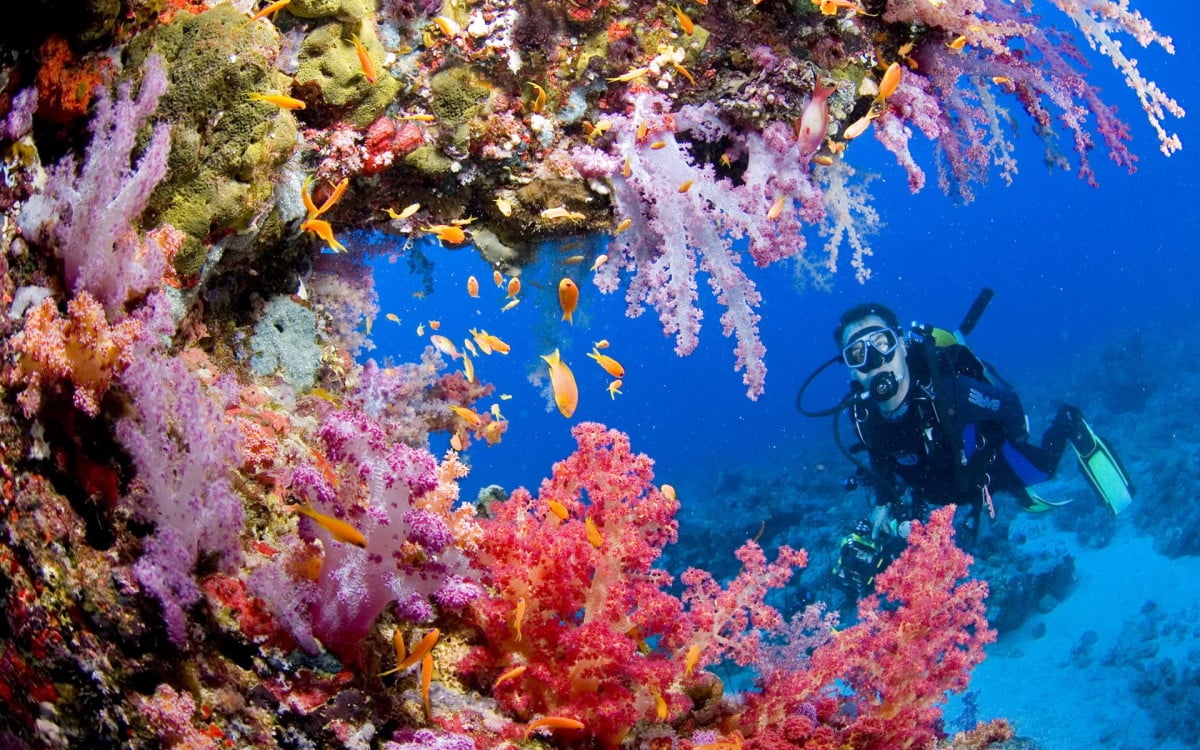The Tubbataha Reef National Park Philippines

Tubbataha Reefs Natural Park is a pristine marine protected area in the Philippines that covers over 130,000 acres of land and sea. The park was established in 1988 and has since become a UNESCO World Heritage Site in recognition of its significant ecological importance.
The park is home to over 600 species of fish, 360 species of coral, 11 species of shark, and numerous sea turtle nests. Visitors to Tubbataha Reefs Natural Park can expect to see an abundance of marine life including whale sharks, manta rays, and large schools of tuna.
There are two main islands within Tubbataha Reefs Natural Park, the North Islet and the South Islet. Both are uninhabited and are strictly off-limits to visitors. However, the surrounding waters offer some of the best diving in the world.
The park is only accessible by boat, and visitors are required to obtain a permit to enter. The best time to visit Tubbataha Reefs Natural Park is between mid-March and mid-June when the waters are calm and visibility is at its best.
Aside from its breathtaking natural beauty, the park also has a rich cultural history. It was once a trading center for Chinese, Malay, and Arab traders who would travel to the park to exchange goods such as pearls, tortoiseshell, and sea cucumbers. Later, the park became a popular spot for pirates who used it as a hiding place for their loot.
Today, visitors to Tubbataha Reefs Natural Park can explore the surrounding waters through diving or snorkeling tours. There are also opportunities for bird watching, as the park is home to a variety of seabirds including frigatebirds and boobies.
History
The Tubbataha Reefs Natural Park was established in 1988 after a group of concerned scientists and conservationists lobbied for its protection. The park was formally declared a National Marine Park in 1988 and was subsequently listed as a World Heritage Site by UNESCO in 1993.
The park has been subject to various threats over the years, including overfishing, illegal fishing practices, and climate change. In 2013, a US Navy ship accidentally ran aground in the park causing extensive damage to the reefs. However, extensive restoration efforts have since been undertaken, and the park remains one of the most well-protected marine areas in the world.
Travel Tips
Trips to Tubbataha Reefs Natural Park can be arranged through various tour operators in the Philippines. These tours typically depart from Puerto Princesa, the capital city of Palawan province. Visitors are required to obtain a permit from the park authorities before entering and should also be aware of the following:
- Diving and snorkeling equipment can be rented on site
- The park is only open from mid-March to mid-June each year
- Strict regulations are in place to protect the park's marine life, and visitors should be mindful of these
- Only a limited number of visitors are allowed in the park each year, so it's essential to book your trip in advance
FAQ
What is the best time to visit Tubbataha Reefs Natural Park?
The best time to visit Tubbataha Reefs Natural Park is between mid-March and mid-June when the waters are calm and visibility is at its best.
What kind of marine life can be found in Tubbataha Reefs Natural Park?
The park is home to over 600 species of fish, 360 species of coral, 11 species of shark, and numerous sea turtle nests. Visitors to Tubbataha Reefs Natural Park can expect to see an abundance of marine life including whale sharks, manta rays, and large schools of tuna.
How do I obtain a permit to enter Tubbataha Reefs Natural Park?
Permits can be obtained from the park authorities in Puerto Princesa, Palawan.
What should I bring on my trip to Tubbataha Reefs Natural Park?
Visitors should bring appropriate diving and snorkeling equipment (which can also be rented on site), as well as sunscreen, a hat, and appropriate clothing for the tropical climate.
Is Tubbataha Reefs Natural Park accessible for people with disabilities?
The park is largely inaccessible to people with disabilities due to its remote location and the challenging conditions of the surrounding waters.
Are there accommodation options within Tubbataha Reefs Natural Park?
No, there are no accommodation options within the park itself. Visitors typically stay in nearby Puerto Princesa or on a live-aboard boat.
Are there any restrictions in place for diving and snorkeling in Tubbataha Reefs Natural Park?
Yes, there are strict regulations in place to protect the park's marine life. These include restrictions on the use of certain types of equipment, restrictions on touching or disturbing marine life, and limitations on the number of visitors allowed in the park each year.
What other activities are available in Tubbataha Reefs Natural Park?
In addition to diving and snorkeling, visitors to Tubbataha Reefs Natural Park can also go bird watching or take guided nature walks on nearby islands.
In conclusion, Tubbataha Reefs Natural Park offers a unique and unforgettable experience for nature lovers and adventurers. From its stunning coral reefs to its diverse marine life, there's no shortage of things to see and do in this magical corner of the Philippines.



Post a Comment for "The Tubbataha Reef National Park Philippines"